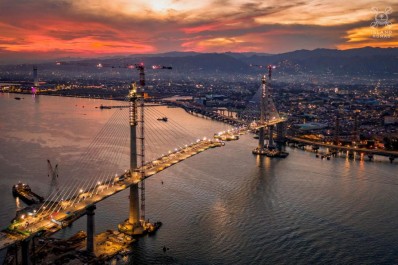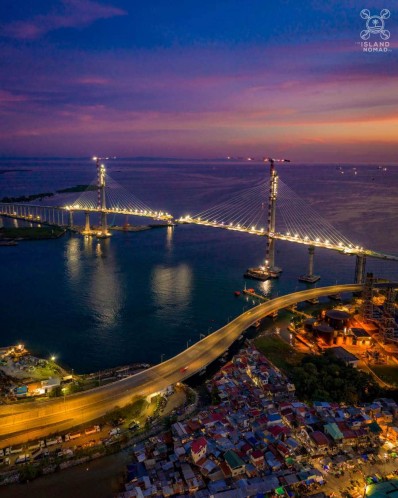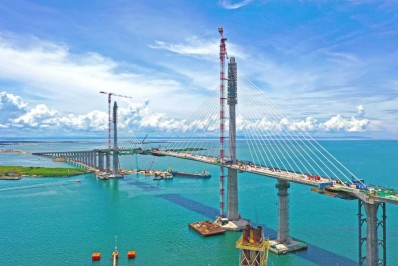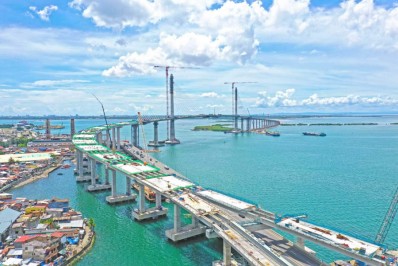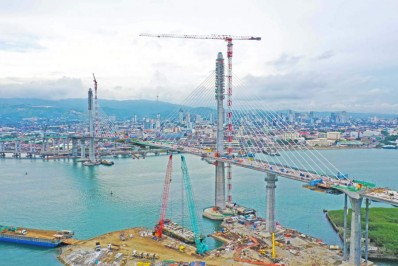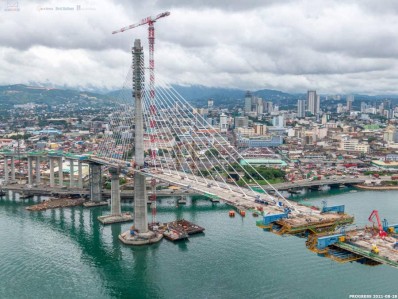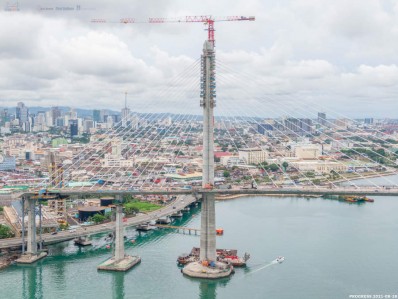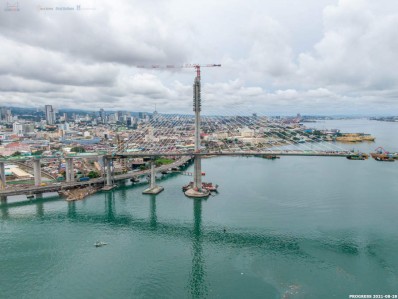Two Comansa 21LC660 tower cranes (in the 36-tonne version), are being used in the construction of the bridge that will join the Cebu City and Mactan Island in the Philippines.
Cebu is the second largest city in the Philippines. This new, major infrastructure will help to decongest the bridges between Cebu and Mactan, where the international airport that serves the city is located. Likewise, it will streamline commercial and industrial travel and will facilitate the transportation of tourists landing at the international airport in Mactan. The journey time between both cities will be reduced by up to 40 minutes. (For more details on the socio-economic impact of this infrastructure see: https://cclex.com.ph/about-cclex/)
To respond to the demands of the project, two Comansa 21LC660 tower cranes pertaining to the 2100 series, designed to offer maximum performance in projects involving particularly heavy loads, such as bridge construction were selected. Furthermore, the 80 metres boom lengths have made it possible to provide on-site accessibility in a wide perimeter around the two main pylons on which the bridge was built.
Key points:
- Due to the geographical location of the bridge, in a country affected by typhoons during the rainy season, the tower crane was designed to withstand winds of up to 250 km/hr.
- The cranes were assembled with a boom length of 80 metres and reached a height of 165 metres.
- The project was divided into three sections: the Cordova viaduct and causeway, the main structure of the cable-stayed bridge, and the access viaducts of Cebu. The Comansa tower cranes have been used for the construction of the main bridge, which will be approximately 650 metres long supported by two towers:
- Tower 1 is at a distance from the coast and not accessible by land, so the tower crane was erected using a crawler crane mounted on a boat.
- Tower 2 is also at a distance from the coast, but in this case a temporary island/dock was made using filler material to facilitate the construction of the bridge and the delivery of materials. The tower crane was erected using a crawler crane from this provisional island.
- Due to their height and proximity to the airport of Mactan, the tower cranes were fitted with safety lights compliant to Civil Aviation regulations both the tower and the boom.
- Both tower cranes were struck by lightning during the construction time, but thanks to lightning protection, operators were unharmed and the tower cranes were protected and able to continue working after mechanical and electrical checks (assisted by the Comansa technical team through online support).
- The tower cranes have been used for different type of purposes:
- Transfer of Heavy equipment (mobile cranes, truck cranes and concrete pumps) weighing up to 32 tonnes.
- Supply of concrete by means of 5 m3 concrete buckets (weighing approx. 12 tonnes) at a working radius of 40 m.
- Lifting and placing of rods, prefabricated pylon rod cages (approx. 8 tonnes), tie rod anchor box, lifting of tie rods, etc.
Opening date: Planned for the first quarter of 2022.
Client: CCLEC (Cebu Cordova Link Expressway Corporation), branch of MPTC (Metro Pacific Tollways Corporation)
Construction company: Cebu Link Joint Venture (CLJV) a joint venture between ACCIONA (Spain), First Balfour (Philippines) and DMCI (Philippines).
Service provider: Boommate and Wolfram Group Incorporated.

